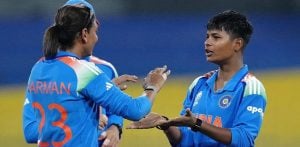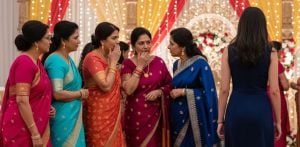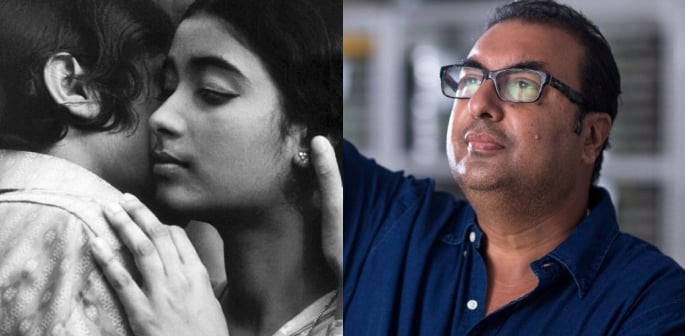"It was hard to believe that it was her debut film."
The Girls (1978), also known as Gehenu Lamai, is a classic film directed by Sumitra Peries.
It tells the story of the childhood friends Kusum Liyanage (Vasanthi Chathurani) and Nimal (Ajith Jinadasa).
When the two fall in love, class differences threaten to tear everything apart.
Added to the drama is the forbidden pregnancy of Kusum’s sister, Soma (Jenita Samaraweera).
With The Girls, Sumitra pays tribute to rural Sri Lanka in this ode to sisterhood and dreams.
As the film was prepared to be screened at the 2025 BFI London Film Festival, DESIblitz had a chat with the renowned archivist, Shivendra Singh Dungarpur.
Part of the Film Heritage Foundation, Shivendra has worked tirelessly to ensure the restoration of countless classics.
In our exclusive interview, he discussed Sumitra, The Girls, and his journey as an archivist.
Can you tell us about the director of The Girls, Sumitra Peries?
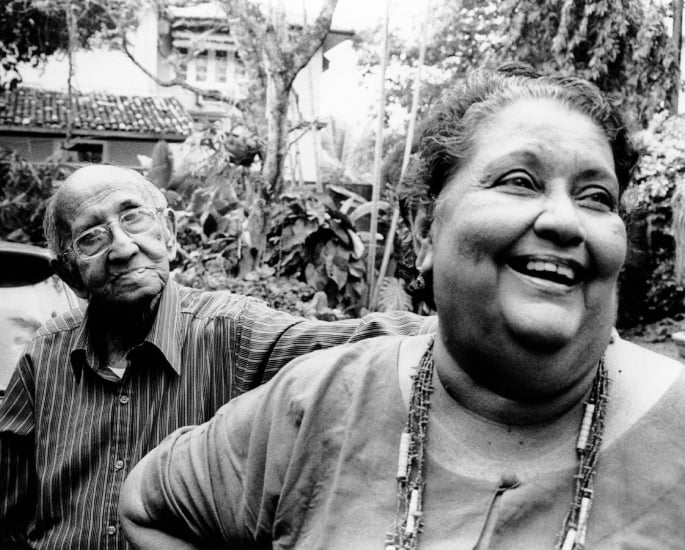 After her brother returned to Sri Lanka, Sumitra met her future husband, the legendary Sri Lankan filmmaker Lester James Peries, at the Ceylon Legation in Paris.
After her brother returned to Sri Lanka, Sumitra met her future husband, the legendary Sri Lankan filmmaker Lester James Peries, at the Ceylon Legation in Paris.
Lester advised Sumitra to leave for England, where she enrolled at the London School of Film Technique (LSFT) in Brixton, where she was the sole female student in a class of mostly white, middle-class males.
She returned to Sri Lanka, where she worked as an assistant director on Lester’s 1960 film Sandesaya.
After working her way up in the industry as an editor, including on a few of her husband’s films, Sumitra directed The Girls, which became a resounding success, at home and abroad.
Its success emboldened her to make nine more films, all of them centring on female protagonists.
How was The Girls selected as the title to be restored from her filmography?
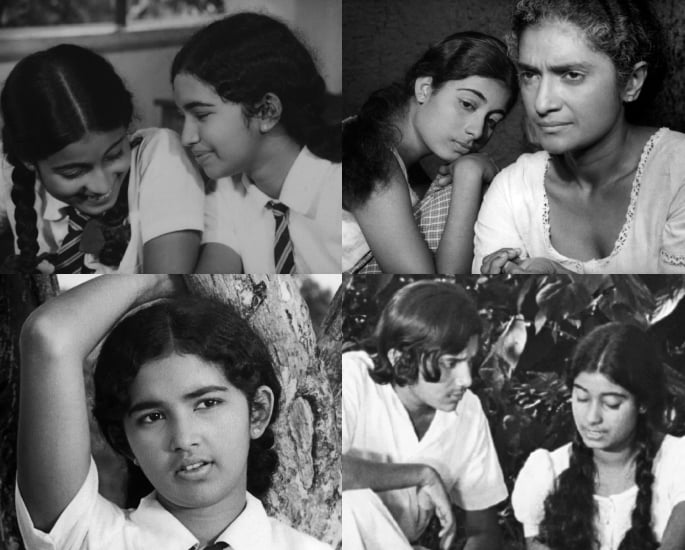 The germ of the idea to restore it began in 2018 when I travelled to Colombo with representatives of the International Federation of Film Archives (FIAF) for a Rescue Mission.
The germ of the idea to restore it began in 2018 when I travelled to Colombo with representatives of the International Federation of Film Archives (FIAF) for a Rescue Mission.
At the time, I met Lester James Peries and Sumitra Peries, and she discussed the possibility of restoring some of her films with me.
She also gave me DVDs of some of her films with handwritten notes about which ones she would like restored, which included The Girls.
I watched all the films and I could see why she was called the Poetess of Sri Lankan cinema.
But The Girls stood out for me. I was so moved by the poetic imagery of the film and the assured delicacy with which she handled the fragile emotions of the young actors.
It was hard to believe that it was her debut film.
The restoration was incredibly difficult, and we had to work with three different elements of the film to bring it back to its original glory.
I only wish that Sumitra Peries was there with us to see the film.
In the film comparison stage, the lab found that one of the positives was the vintage release of the Sri Lankan version that had additional shots and this positive was used as a guide for the restored version.
Hours of work went into the digital restoration to correct distortions and recover the image as faithfully as possible.
What inspired you to become an archivist?
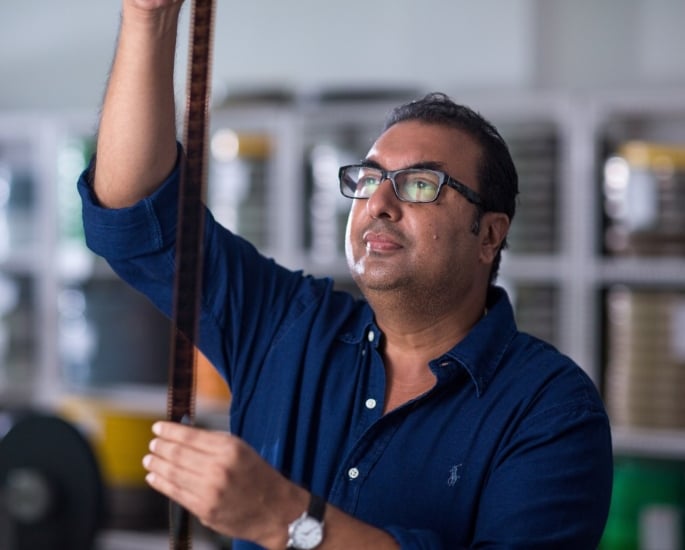 My love affair with cinema began as a child.
My love affair with cinema began as a child.
During my summer vacation, my maternal grandmother, Usha Rani, would book the entire local cinema hall.
The theatre would be empty but for the two of us, and I would sit with her in the stalls and watch films the whole day.
I still remember the colourful images of Pakeezah and Meena Kumari in ‘Inhi Logon Ne‘.
My maternal grandfather had a projectionist who would show us 16 mm and 8 mm films of Charlie Chaplin, Laurel and Hardy, Buster Keaton, and Danny Kaye, in the verandah of Bhojpur Kothi in the evenings.
There was such a romance to these experiences that the films I watched with my grandparents are etched in my memory even today.
It was in Bologna that I connected with Martin Scorsese’s World Cinema Foundation and was told that they had been trying to get the reels of the film “Kalpana” (1948) directed by Uday Shankar out of India for restoration for almost three years, but had not succeeded.
I told them that I would help them and managed to send the cans to Italy for restoration in about three months.
The restored film premiered at the Cannes Film Festival in 2012.
I realised that this was a cultural emergency and saving our film heritage had to be taken up on a war footing.
We couldn’t pass the buck anymore and certainly could not imagine this to be the government’s sole responsibility other than in the areas of infrastructure and funding.
I had learned that film preservation was a passion, a vocation that demanded its own resource of experts, much like filmmaking.
That’s when the idea of setting up a non-profit foundation dedicated to preserving India’s film heritage took shape.
What has the response to the restoration of The Girls been like?
 The response to the restoration of The Girls has been fantastic.
The response to the restoration of The Girls has been fantastic.
We premiered it in Cannes and since then we have been constantly receiving requests from film programmers to screen the film all over the world, from Bologna to Melbourne and now London.
We recently premiered it in Colombo with the Prime Minister of Sri Lanka in attendance, who spoke from the heart about her memories of watching the film as a young girl and the impact it had.
The film has two screenings at the London Film Festival, and I have heard that they are both sold out, and the BFI has expressed interest in licensing rights for the film.
The Girls is undoubtedly a piece of cinematic art.
While it may have been released over 45 years ago, the film still holds a pride of place in Sri Lankan cinema.
The movie is not just a film – it is a testament to the vision of Sumitra Peries.
Shivendra’s words and his inspiring journey are a tale of perseverance and goodwill, which will hopefully motivate newer viewers to watch The Girls.
The 2025 BFI LLF is doing a wonderful job in restoring the film to more current generations.
For its dazzling story, its memorable characters, and the effort behind-the-scenes, The Girls should be celebrated.








































